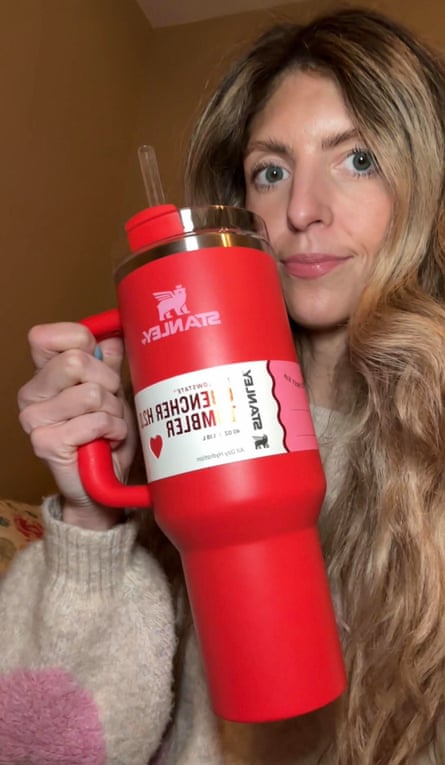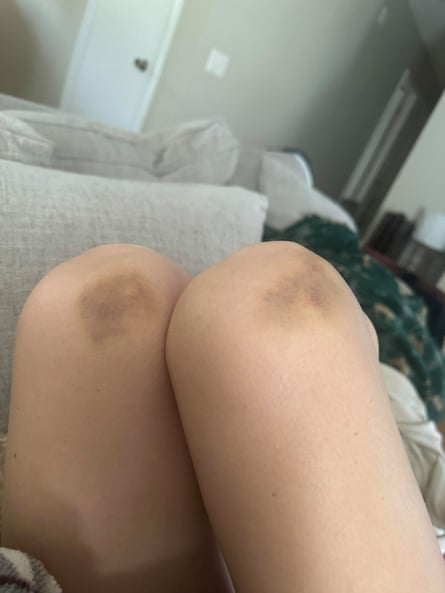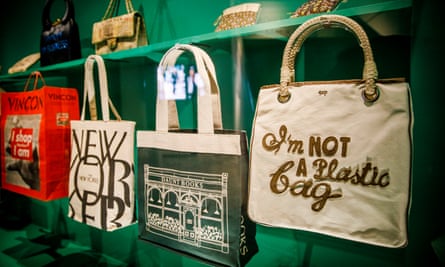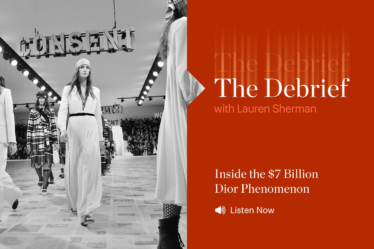
On New Year’s Eve, Meagan Howard waited outside a Target in Louisiana to buy this season’s most coveted accessory: a shiny pink travel tumbler called the Starbucks x Stanley Quencher. When the doors opened, Howard took off like a race horse leaving the starting gate, running as fast as her Uggs could carry her. Then the 33-year-old felt herself slipping, ultimately face-planting on the cold tile floor.
“My mom saw me fall down, and she said it took a while for me to get back up,” Howard, who is a first-grade teacher, said. “But it’s worth it, I think. I got the cup.”
The cup she got was a limited-edition version of a 40-ounce stainless steel, vacuum-insulated jug with a straw made by Stanley, the 110-year-old brand usually associated with outdoor enthusiasts or dads with boats. Though they’re sold out now, Starbucks x Stanley Quencher mania lives on in TikTok videos shot on New Year’s Eve, showing grown adults stampeding toward displays in Targets across the country.
How did a $45 water jug spark such chaos? (And since when do water jugs cost $45?)
The thirst for Stanleys really took off in early 2022, when the product was profiled in the New York Times. Influencers on #WaterTok, a corner of TikTok where people with very plump-looking skin take hydration seriously, praised the cup as a holy grail, listing out its purported virtues: it fits in a car’s cup holder and has a straw for easy drinking, and a handle too. From there it caught on with the people most likely to succumb to targeted ads or influencer endorsements. The New York Times called Stanley fans a “sisterhood”, reversing decades of macho branding.
The TikTok love translated into sales: CNBC estimates the company made over $750m last year, compared with an average of $70m a year before 2020. On social media, users show off their collections, flaunting cupboards filled with cups in every hue. Many have also bought accessories – such as plastic “spill stoppers” that seal up straws – to personalize their Stanleys. By January 2024, TikTok videos of Stanley cups had been viewed over 201.4m times.
The Stanley Quencher has been called an “adult sippy cup”, an emotional-support item that comes in 26 colors, so it makes sense that its evangelists would fall victim to infantilization. What adult needs a straw to avoid spilling all over themselves? (Try sipping from a wide-brimmed Nalgene, and then ask that question again.) The single most redeeming quality of a Stanley – the fact that it is reusable, meaning fewer people are throwing out non-reusable water bottles – is also being debated. Just how just how “eco-friendly” can it be when people are collecting a Quencher (plus endless accoutrements) to match every outfit?
Despite suffering bruises to both her ego and knees, Howard took home a new prized possession that night – one that promises to keep her hydrated, and one of the most stylish people in the schoolyard. She nabbed it just in time for the Stanley backlash to start.
Stanleys and the status trap
Twenty years ago, celebrities toted their plastic bottles of Fiji Water as a luxury item; “designer water” supposedly made with healthy minerals in sleek packaging was dubbed the next big thing. “The customer discovered that there was more to water than just water,” said Martin Riese, a TV personality known as “the water sommelier” (he leads water tastings and comes up with water pairings).

As the anti-plastic pollution movement picked up steam, reusable water bottles became the new stars. A 2020 study found that 60% of US adults use reusable water bottles, a decision that’s generally regarded as environmentally responsible. “It” cups emerged, hawked by celebrities and influencers who wanted to at least appear eco-friendly. Kendall Jenner and Chrissy Teigen swore by their gallon-sized HydroMates, monstrosities emblazoned with phrases like “KEEP DRINKING” and “NO EXCUSES”. Inspirational? Threatening? That’s up to interpretation.
If you haven’t followed the trend closely, you’d be forgiven for mistaking a Stanley for a Yeti or a S’well for an Owala – all reusable water bottle brands that have had their moments.
Gendering water, the elixir of all life, seems ridiculous – and yet, most of the reusable bottle companies heavily market to women. Daniel Benkendorf, a psychology professor at the Fashion Institute of Technology, says that’s usually how it goes. Women are the target demographic for “sustainable” products because, as he says, “these concepts have been feminized in our culture”.
“Young people, especially young women, are more likely than ever to say that a brand’s ethics matter to them and they will only buy from companies whose values align with their own,” Benkendorf added.
Stanley wasn’t always a hit among women. Technically, the Stanley story starts in 1913, when William Stanley Jr made the first vacuum-insulated steel bottle. Mid-century ads promised that “IT WON’T BREAK!” and fashioned the product as a worksite essential. The reputation stuck, and Stanley (the brand) marketed its classic “hammertone” green products mostly to men for about a hundred years or so.
But for our purposes, Stanley came on to the scene around 2020. The Buy Guide, a review site that rates products in order to help followers make “purchases that make life a little better”, had been promoting the tumbler to its readers for years. Stanley took note of this boost and tapped the Buy Guide’s founders to lead its social media outreach.

At the time, the Hydro Flask – another stainless steel, vacuum-insulated bottle – was an it-purchase for teen girls. “We told Stanley that we expected their Quencher to be the grown-up version,” Ashlee LeSueur, a Buy Guide founder, said. “Just as every girl had a Hydro Flask to match their backup, her mom would have her own color of the Quencher.” It worked, as its #WaterTok success and media coverage show.
Despite the name (and function), buying a Quencher isn’t always about staying hydrated. (Indeed, on TikTok you’ll find women pouring soda into theirs.) But owning a Quencher means becoming part of a community, led by the influencers who peddle it as a lifestyle essential on social media. “When we carry items every day, it becomes part of our story, our identity, with colors that represent who we are,” LeSueur said.
Or maybe who we want to be. Lakyn Carlton, a Los Angeles-based “sustainable” stylist, says the cup’s reputation signals a certain kind of status. “It costs $45, which is expensive, it comes in all these colors, and it fits into a car’s cup holder,” she said. “It’s about channeling that attitude: I can drive around all day with my different colored cups to match every outfit.”
Dismissing things that women like has long been a cultural pastime. For the last decade or so, “basic” has been hurled as both an insult and point of pride, referring to someone (almost always a she) who enjoys indulging in things like scented candles, Ugg boots, frothy lattes or Taylor Swift. LeSueur believes that the popularity of Stanleys led the tumblers to fall into this trap. “When something becomes super popular, we all have that friend in our friend group who decides not to like it,” she said. “People can do what they want, but choosing not to adopt a really good product in your life because other people have it is a stupid decision.”
An eco-friendly trend?
You might expect JB MacKinnon, a writer who titled his latest book The Day the World Stops Shopping: How Ending Consumerism Gives Us a Better Life and a Greener World, to rail against the Stanley tumbler. (As a Canadian, MacKinnon refuses to call it the Stanley cup, because, well, you know.)
Sure, scenes of women racing each other down Target aisles to get their Stanleys represents the uglier side of late-stage capitalism: our unquenchable desire for more, more, more makes villains out of all of us. But MacKinnon wonders why certain buzzy products get all the hate, when every item produced and sold on a mass scale contributes to the climate crisis.
“I get a little bit tired of the finger-wagging,” he said. “We seem to be selective about who we point out as the people deepest involved in consumer frenzies.”
MacKinnon doesn’t let Stanley – or any eco-trend – off the hook, though. It’s a predictable cycle: first, a buzzy, supposedly green product comes out, with the added benefit that using it makes you a Good Person Who Cares About the World. Demand rises, production ramps up, and people over-consume the item.

The same thing happened with tote bags. First, the utility items were for carting groceries home, a necessity intended to combat plastic waste. Then came the status tote, emblazoned with a brand name, intended to show the world that you listened to NTS or read the New Yorker. Collections built up, and people ended up with closets full of tote bags – more over-produced junk they never use.
“We’re not achieving anything with these products and are often going backwards,” MacKinnon said. “Everyone was supposed to buy one reusable water bottle 15 years ago and carry it to the grave. But now there’s a constant shift and look in the style of these bottles, and people enter into a constant replacement cycle. I’d be surprised if at this point reusable water bottles are accomplishing much.”
For what it’s worth, Howard, the teacher who took a tumble running to get her Stanley Quencher, hasn’t used the product she fought so hard to get. She’s even scared to take it out of its packaging. “It’s such a hot commodity and I don’t want to mess it up,” she said. “I’m trying to protect it, because I know it’s valuable.”



